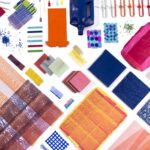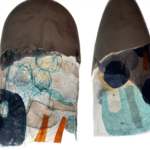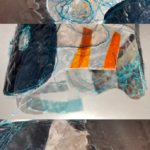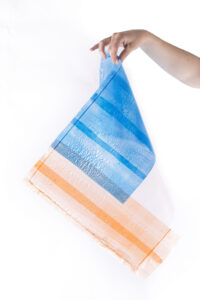week 2: understanding the relationship between the environment and design
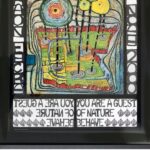
What are the real intentions of the design industry?
This week’s lecture and reading have made me question if the intentions of the design industry currently align with my values. Throughout history, designers have been motivated almost entirely by consumerism, providing short-term solutions to minor day-to-day problems, with complete disregard the the larger scale environmental issues that they are creating and the long-term implications of what they are doing to the world around us. To me, it seems that designers have been the driving force behind the capitalist society of mass consumption that we now face. The design industry has spent years causing considerable amounts of damage to the environment, participating in the mass extraction of resources and causing huge amounts of waste and pollution through manufacturing. All the while disguising these irresponsible choices by providing superficial design solutions that claim to transform lifestyles. Particularly within Western societies, it seems we are completely brainwashed…
Overcoming dualism
I have learnt this week that as a society we tend to think of self and world as two separate things. Only now, in our mess of an environmental crisis, are we beginning to realise that we are in fact completely intertwined with our environment. Particularly within Western society, nature is viewed as something dismissive and passive which we have repeatedly felt it was our right to exploit. In my opinion, the key to change is acknowledging our interdependence with the environment, as if we continue to act against it it will only destroy us both. I do truly believe that in the early days of the industry, designers did not realize how limited natural resources were, and how damaging the design and manufacturing process can actually be. However, I do think as the industry became more aware of its negative environmental impacts, it chose to ignore it in pursuit of the development of technology, resulting in mass consumption and therefore financial gain.
Fallan and Jorgensen: Environmental Histories of Design
This weeks reading helped me to understand the importance of designers in changing our current environmental state. Fallan and Jorgensen argue that designers place in the contemporary environment is unclear, and there are various opinions on the impact of designers on the environment. On one hand, they think that designers ‘can easily be blamed for causing environmental problems but may also be said to possess some of the competences that could help solve those problems’ (Fallan and Jorgensen, 2018).
One case study in this article that particularly interested me was looking at the Arts and Crafts movement, and more specifically William Morris. Morris’s work was heavily inspired by nature and he was very openly against industrialisation and held an ideal that everything should be designed and hand-made in small workshops. However, this was neither economical nor practical and therefore a highly unrealistic outlook. Even Morris himself mass-produced wallpaper which was dyed its iconic green colour using arsenic (a chemical that is highly dangerous and extremely harmful to humans). I felt this was a perfect example of how ironic the concept of separation between humans and nature actually is, and though I am a big fan of Morris’s work I had never looked at it in this way before.
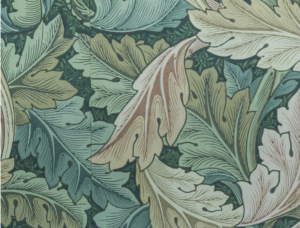
Though designers can easily be blamed for contributing to our current environmental issues, the design industry may also hold the most potential for actually solving those problems. This is unarguably a huge responsibility but does give me hope that some good can come from the next generation of designers, and has made me curious as to what I can personally do to contribute to this change.
Designer of the week…
This weeks lecture touched on Friedensreich Hundertwasser, a designer that I was already very interested in and whose work is a great example of environmental awareness within design.
Friedensreich Hundertwasser was an artist and architect from Austria who is well know in the field of environmental protection. Last year I went to visit one of his most well known pieces of architecture in Vienna, Hundertwasserhaus. When visiting the Hundertwasser museum I found it very interesting to find out about his commitment to not only design but environmental protection and he spread his ecological and socio-critical opinions through numerous manifestos, artworks, speeches and public demonstrations. I particularly liked his designed posters that supported the protection of nature. These environmental posters were printed and all money made was donated to environmental initiatives and environmental organizations.
‘You are a guest of nature-behave’ (Hundertwasser, 1980)
https://hundertwasser.com.
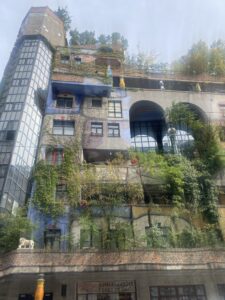
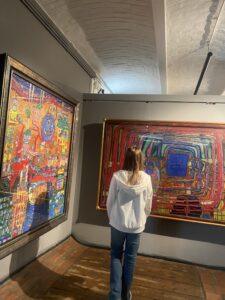
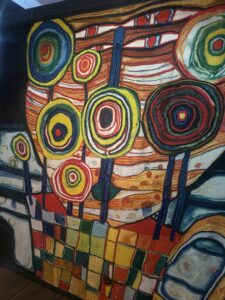

References-
Fallan, K. and Jørgensen, F.A. (2017). ‘Environmental Histories of Design: Towards a New Research Agenda’, Journal of Design History, 30(2), pp.103–121. Available at: doi:https://doi.org/10.1093/jdh/epx017. (Accessed 3 October 2023)
Hundertwasser (n.d.). Hundertwasser- Friedensreich Hundertwasser. Available at: https://hundertwasser.com. (Accessed: 3 October 2023)
National Trust. (n.d.). Who was William Morris? Available at: https://www.nationaltrust.org.uk/discover/history/people/who-was-william-morris. (Accessed: 3 October 2023)
